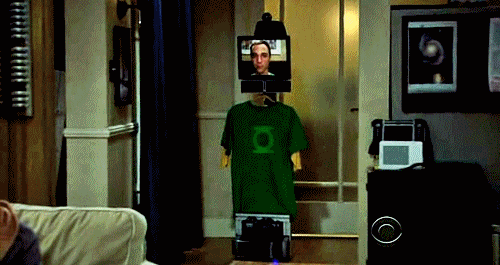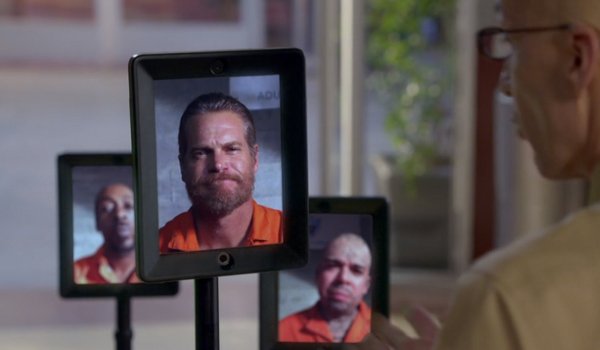I’m fortunate that I have the opportunity to work remotely. This is convenient as I recently moved to Bath, and the door-to-door commute to Oxbotica’s new office in Oxford takes around two hours each way.
Mine is not an unusual arrangement: remote work is now a very normal thing. Lots of people have written about the benefits it provides to employees, employers, society, and the environment. There’s a wealth of available advice about the unique challenges that distributed teams face, and the tools and processes that enable them to be effective1.
Telepresence robots are one of these tools, used in certain niche domains of education, medicine, and academia. However, I rarely see mention of them in the context of general-purpose remote working.
Meet the robotic avatar that I’m piloting around the office from a hundred miles away:
Alright, I concede that it looks a bit strange at first. You’re maybe thinking it’s either goofy or unnerving, depending on your perspective (and your familiarity with The Big Bang Theory2 or Community3):


Initial impressions aside, I find this device improves the remote working experience by far the most of any other single tool, including Zoom and Slack which we also use profusely. That’s not to say it’s a replacement for these; it serves a different purpose in the arsenal.
The main and overarching benefit is the autonomy it provides. It is a semi-permanent and mobile physical presence back in the office without being tethered to a Zoom session. I can visit and interact with colleagues spontaneously without the invasive (albeit minor) overhead of having to arrange a video call. When the situation is reversed, I find it more natural to have a conversation with a colleague on the robot than to don headphones and speak to them through my laptop webcam.
In day-to-day work, I try to spend time sitting by my desk as if I were there in person. I find that this connection to the background ambiance of the office helps alleviate the feeling of isolation that remote workers are often all too familiar with. Crucially, it also means I can take part in impromptu office interactions that so many times lead to productive discussions, decisions, and breakthroughs.
Given these advantages then, why aren’t telepresence robots more often touted as a useful remote working tool? Maybe some of the following reasons contribute to their still-niche status:
- Existing tools like Skype, Zoom, Slack, and email work well enough in most situations that not many people justify the use of another tool that is perhaps seen as a novelty.
- They can be expensive. The 8-hour battery life model that we use costs upwards of $10k. We obviously believe that the benefit outweighs the cost, but it’s understandable that other teams may make a different assessment.
- They ultimately require a physical office space, and so are of very limited use to all-remote teams.
- Mobility is less of an advantage in closed-plan spaces. These devices do not yet have the ability to open doors or traverse stairs or elevators unassisted. Colleagues may get fed up with playing chaperone.
- Attending small meetings with max one or two robotic attendees works well. However, in larger meetings and those that involve multiple remote attendees or screen-sharing, we usually just fall back to using Zoom. The audio and video quality on the robot I’m familiar with is surprisingly good, but it still struggles to hear people or see a slide deck from across a modestly sized conference room. That said, sometimes I’ll use both at the same time (one muted), depending on the meeting setup.
- Different company cultures. Oxbotica is a robotics company so it’s not surprising that people are comfortable around these devices, or quickly learn to be. They’ve also been present since the very beginning; they weren’t suddenly introduced into a large existing team. In an article in The Verge the author experienced, in the latter scenario: “the bot you’re inhabiting [shaping] how people relate to you”. In my experience this may be somewhat true, though it’s difficult to know how much of that feeling is just in my own head. I also can’t say whether it’s any better or worse than how being a face on Zoom shapes how people relate to me.
Whatever the reasons, we still plan to use these robots at Oxbotica for the foreseeable future, alongside more conventional communication tools. I’m really curious to hear other people’s thoughts and experiences with them to learn more about where they work and don’t!
-
Some of my favourite blog posts on the subject include Julia Evans' Working Remotely, 4 years in and Andreas Klinger’s Managing Remote Teams - A Crash Course. ↩︎
-
The Big Bang Theory S04E02: The Cruciferous Vegetable Amplification ↩︎
-
Community S06E05: Laws of Robotics & Party Rights ↩︎
